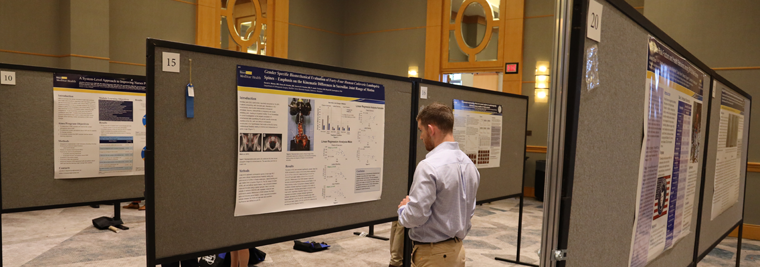At the 2019 MedStar Health-Georgetown University Research Symposium, three abstracts were recognized as outstanding abstracts from among all of our submissions. These research studies were the three highest scored out of the over 450 submissions to the Research Symposium by the Scientific Review committee and exemplifies the caliber of work presented by the MedStar-Georgetown research community.
"Multi-Modal Sepsis Performance Improvement Initiative Improves Early and Appropriate Treatment, Reduces Sepsis-Related Readmissions, and Reduces Overall Mortality" analyzed patient outcomes before and after implementation of the Centers for Medicare and Medicaid Services (CMS) SEP-1 Core Measure. The SEP-1 Core Measure mandates that hospitals implement quality improvement initiatives to improve sepsis outcomes. The team looked at data before and after the implementation of the multi-modal sepsis performance initiative launched in 2016 at MedStar Washington Hospital Center (MWHC).
Led by Seife Yohannes, MD, the research team included Sean Huang, PhD, Andrea Ryan, and Muhtadi Alnababteh.
The multi-modal sepsis performance initiative at MWHC had multiple components as part of the process, including:
- a hospital-wide educational campaign about sepsis
- 24-7 electronic warning system (EWS) of patients at risk for sepsis
- a rapid response nursing team that monitors the EWS and implements bundled treatments
- 24-7 mid-level provider team that evaluates patients identified by the EWS
- quality improvement initiatives in sepsis documentation and coding.
The study used coding data for over 4,00 patients with a diagnosis of sepsis as reported to CMS. The study compared patient outcomes six months before the launch of the initiative and 13 months after full implementation.
The study found that based on an average of 2000 sepsis cases at our hospital, this amounted to 90 lives saved per year. Post-intervention, hospital length of stay was reduced by 1.8 days and re-admission rate was reduced by 1.6%.
Regression analysis showed age, admission through the emergency department, and severity of illness as independent risk factors for increased mortality. Adjusted for these risk factors, the incidence of severe sepsis and septicemia was reduced by 5.3% and 6.9% in the post-intervention period, while the incidence of simple sepsis increased by 12%.
The study concluded that the “multi-modal sepsis performance improvement initiative improved quality of care and patient outcomes.”
Congratulations to the research team for their outstanding research! You can read about the other winners here and here.

